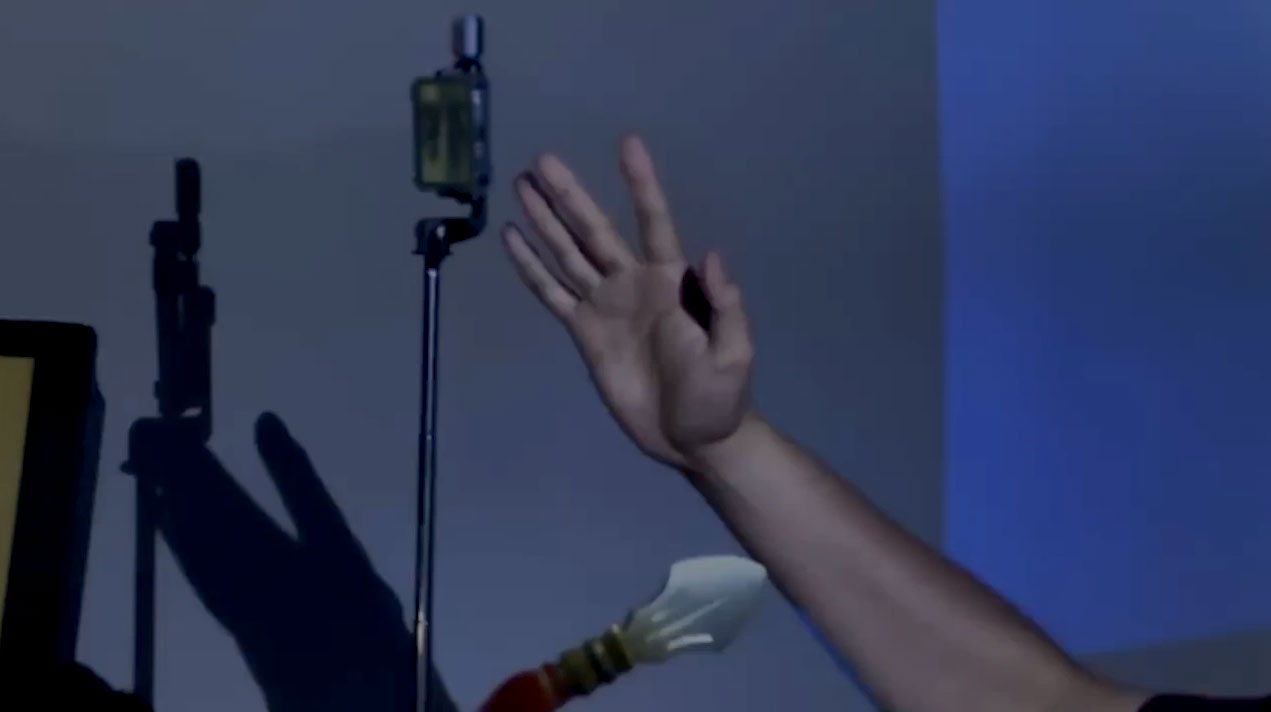On May 8, 2025 we invited traditional puppeteer LI YI-HSIEN 李奕賢 to join us for a show and tell sharing of not knowing, machine learning, storytelling with hands, puppets, AI and moving images at “Welcome Lim-Kong Society” 歡迎光臨麟光社, an event space organized by Xia Lin and Sheryl Cheung from lololol which due to its intimate size and sincere commitment to knowledge sharing and testing new ideas, is conducive to inspiring exchanges between presenters and audience members.
In order to set the stage contextually, we started with a 30 min. slide presentation that acknowledged how hard or – in most cases – impossible it has become for most human minds to comprehend the processing power and speed of fast evolving AI-models when it comes to learning, reasoning and calculating predictions.
The limitations of our mental capacities became immediately obvious, when we compared digital machine reasoning powers based on Truth Tables to analog reasoning test we did in 2005 for a conceptual land-based work called “The Paradox of the 10 Acre Square,” where we tried to explain if a dirt road was actually crossing a 10 Acre Square of desert land we had bought “sight-unseen” on eBay in the American West.
In this experiment we had considered three kinds of inputs and it took us 30 seconds to process a logical reasoning and come to a factual conclusion, which even though “proven logically correct” still felt confusing.
But, how does this result compare to the current (May 2025) developmental stage of LLM powers, as demonstrated in this educational info-video by 3Blue1Brown, which poses the following hypothesis: “Imagine that you could perform one Billion additions and multiplications every single second. How long that you think it would take for you to do all of the operations involved in training the largest Language Models? A year? Ten Thousand Years? The answer is actually much more than that. It’s well over 100 Million years.”
How is that even possible?
Isn’t it a relatable reaction then, we pondered, or one of the next possible “logical” steps to elevate or outsource “mind-boggling” technological capacities we cannot comprehend or experience within our bodies into “otherworldly” realms of “awe” or “mystery?”
Isn’t it very human to ask if a non-material entity – a ghost – is inhabiting and empowering the material body of the machine?
Of course, to pose this question is not new. The term “Ghost in the machine” was initially coined by Gilbert Ryle, a British philosopher who in 1949 critiques the notion that the mind is distinct from the body, when he argues that “mind” and “body” do not belong to the same logical category. In 1967 the Austro-Hungarian author Arthur Koestler wrote a novel with the same name, in an attempt to explain human violence. I, Robot from 2004 is a sci-fi action film where a technophobic detective investigates a murder potentially committed by a robot, uncovering a deeper conspiracy that threatens humanity’s future. The Three-Body Problem, a 2008 novel by Chinese author Liu Cixin, drives these concepts further – out into alien space – where the story explores the interplay between technology and consciousness and shows the limits of human understanding.
The idea of “ghosts” involved in reasoning and thinking also triggered us to revisit the German term “Geisteswissenschaften.” In German the word for “ghost” is “Geist,” which not only means “ghost,” but also “mind,” “spirit” or “intellect.” We therefore call “human sciences,” or “Humanities” (philosophie, history, philology, theater studies, media studies, religious studies, etc.) “Geisteswissenschaften.”
Then there is also the word “Zeitgeist,” which literally can be translated as “the spirit of the age,” and describes the invisible forces, demons or agents that characterize a given era in the present or in history.
Being in Taiwan we began to become more aware of ritualized interactions between ghosts and humans, especially during “The Hungry Ghost Festival” and also got some insights about how ghosts are being portrayed in popular Taiwanese culture by watching the 2022 movie “Marry My Dead Body” 關於我和鬼變成家人的那件事 by Cheng Wei-Hao, which literally translates as: “About the time when a ghost and I became a family.”
Yet, our most fundamental introduction to ghosts and ghost catchers we acquired in our collaboration 2017/18 with Master Wong Fai from the Hong Kong Puppet Art Center, when we, over the course of almost a year, developed and performed our new media opera performance: “Zhong Kui – and the Reform of Hell.”
In order to provide an entry point for LI YI-HSIEN to make ghosts tangible in a short puppet play following our presentation, we had – in preparation of this event – suggested to refer to chapter 50 情亂性從因愛慾 神昏心動遇魔頭 of the “Journey to the West.”
Google translates the chapter title as: “The love and lust make you lose your mind and meet the devil.”
Chat GPT translates as: “Passion in turmoil, desire leads to lust; mind clouded, heart stirred, encountering a demon.”
Deep Seek translates as “In the realm where emotions spiral into chaos, desires ignite, nature bends to their call. A heart once clear now shrouds in misty fog, as shadows emerge, whispers dark and small.”
Google’s Gemma translates as: “Driven by lustful love, desires run wild, heart blinded by passion, encountering the devil.”
DeepL translates is as: “The sex was caused by love and desire. I’m in a state of confusion and I’m in a state of evil, and I’m in a state of shock.” and Meta’s Llama translates it as: “I’m possessed by my passions and desires, lost in a world of chaos.”
Yi-Hsien responded by sending a storyboard and a test-video, to which we created a soundtrack using different AI’s.
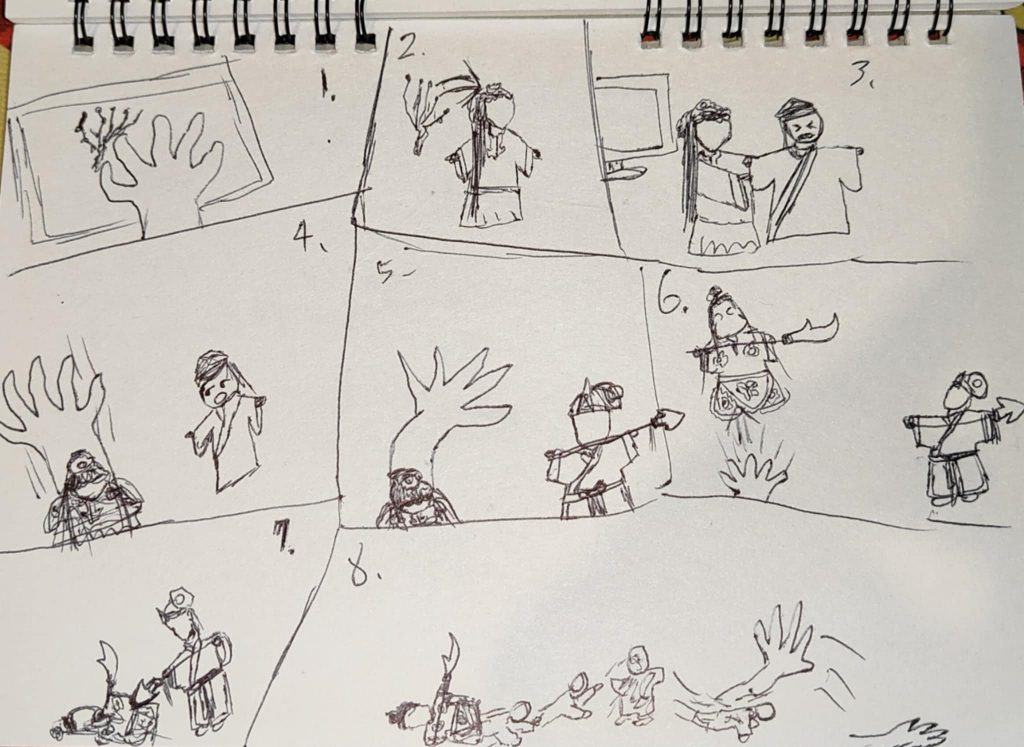
The performance was followed by a Q&A where Yi-Hsien reiterated some of our ideas to compare the use of analog communication devices with digital ones from his training and experiences as a traditional puppeteer. One question that started the discussion was:
If there is a “ghost” in the machine, should we be polite when asking AI questions, even though saying “Please and Thank you” costs enormous amounts of electrical energy that could be considered “wasted” on non-sentient machines.
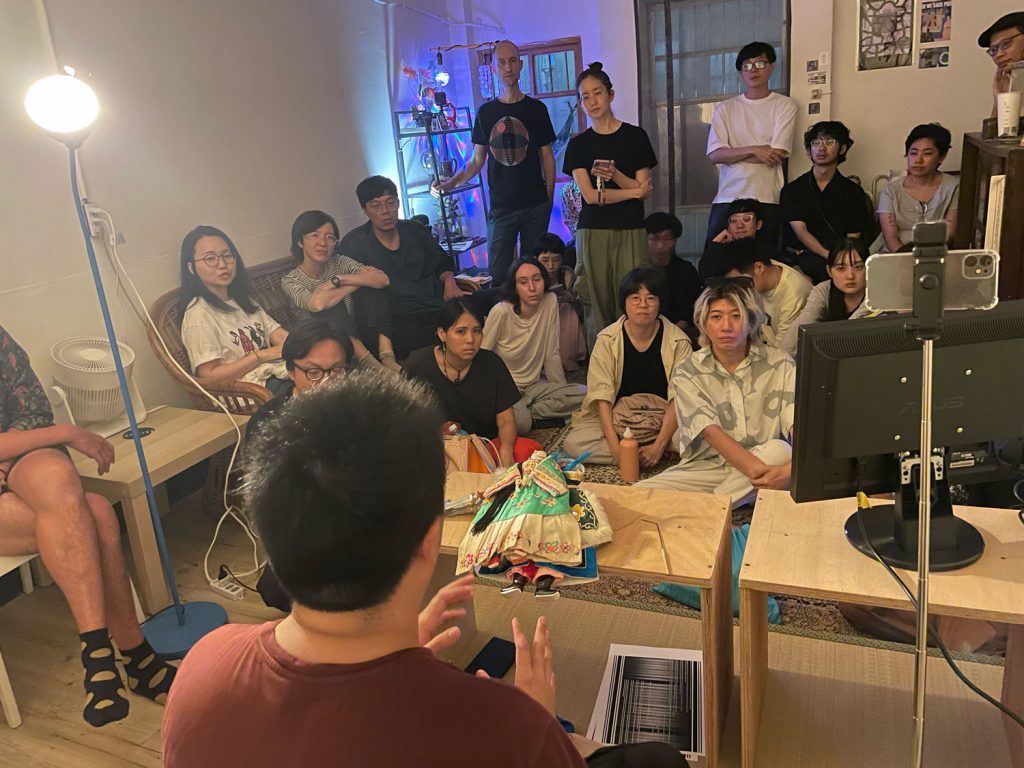
Yi-Hsien responded by sharing that there was a time when he directly talked to his puppets and asked their permission to inhabit their bodies before each performance. He generally treats his puppets with a lot of respect and care, as he considers them not only to be his tools but also family members. The issue seemed to revolve around respect. Loosely transcribed by MacWhisper and translated by Google translate he said: “I think it is a kind of awe on the spiritual level. Why? Because the puppet is not a tool. When you say 操偶師 (puppet operator), it is a thing. But when you say 請偶師 (puppet inviter), it is not. It is your partner or even your family. So in this way, you may say it is a psychological effect.”
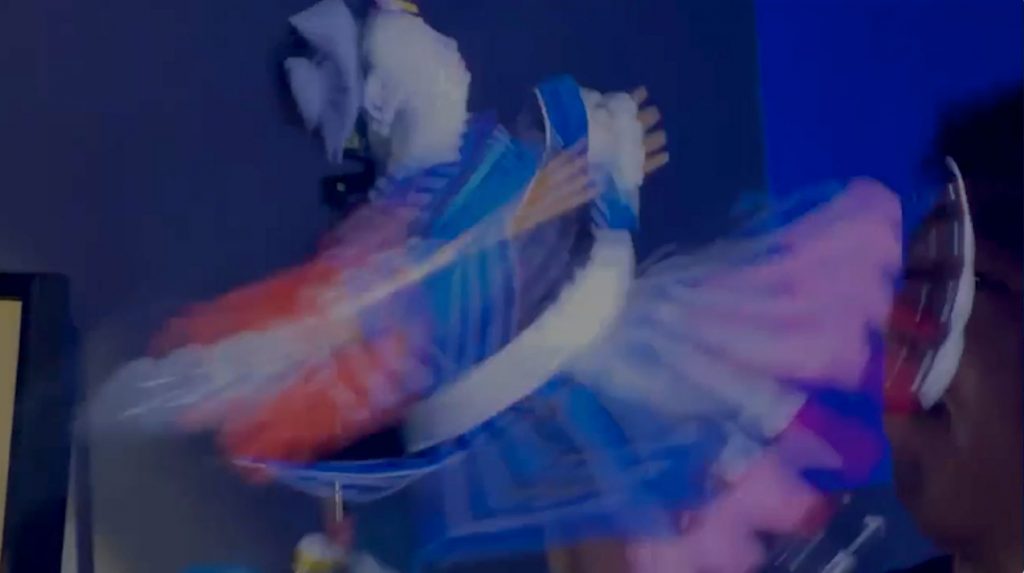
Chu Feng-Yi, an independent curator and researcher who explores the integration of mysticism in art across cultures and eras, clarified this statement further: “The discussion was about the different use of the terms “操偶師” (puppet operator) “puppet inviter” (請偶師). The former literally means “a master who manipulates puppets,” while the latter means “a master who respectfully invites the puppets to perform.” Li Yi-Hsien said most people would describe them as “puppet operator,” but he actually preferred the identity of “puppet inviter”. The difference between these two expressions reflects an underlying ontological distinction: the former views puppets as objects or tools, whereas the latter regards them as entities imbued with divinity and spirit.”
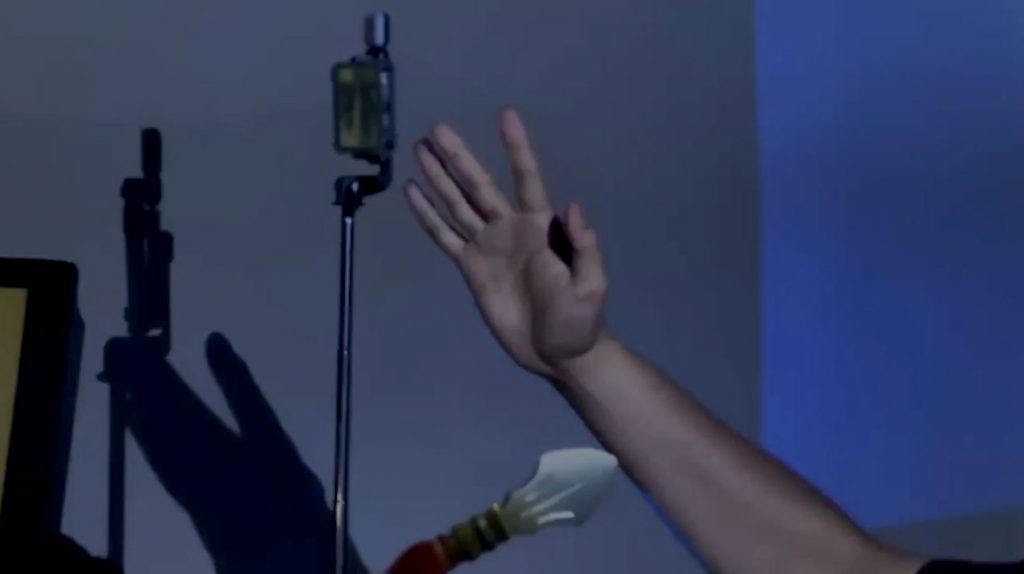
Another question from the audience concerned the “naked” hand in the performance and it’s translation into a skeleton on the adjacent monitor. Did that mean the “naked” hand “wore” the skeleton as a puppet? At that point the discussion drifted fully into Mandarin, and we traded in “verbal content” with savoring the “ooooohhhhs” and “ahhhhs” that roamed through the captivated audience as Yi-Xian shared his insights.
Some people stayed after the Q&A to practice playing the puppets. Xia Lin, who has since 2017 incorporated her Tai Chi practices into her artistic work by channeling and expressing the energy of digital appliances/tools like laptops or photo cameras or computer cables through Tai Chi -adapted movements, had a sort of existential AHA moment, when she put two Martial Arts Warrior puppets on both of her hands. When Yi-Xian tried to show her how to move the puppets so they would engage in a Martial Arts fighting scene – she froze and her eyes widened, when she said: “But that means I have to attack and defend at the same time? How can I do that?”
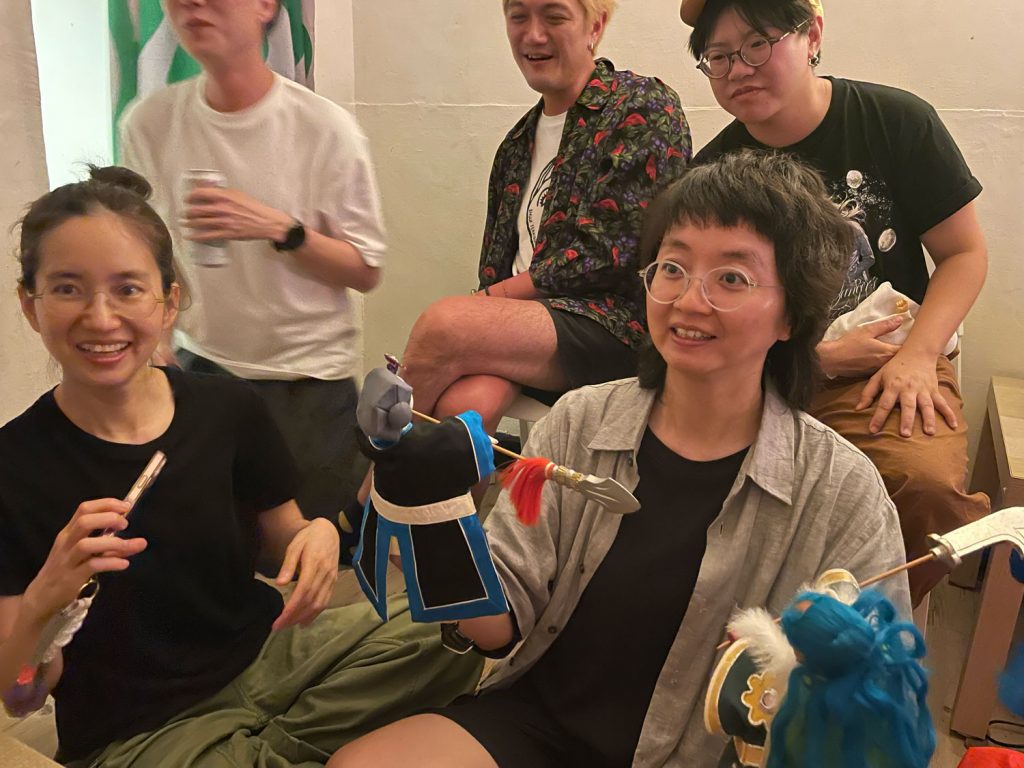
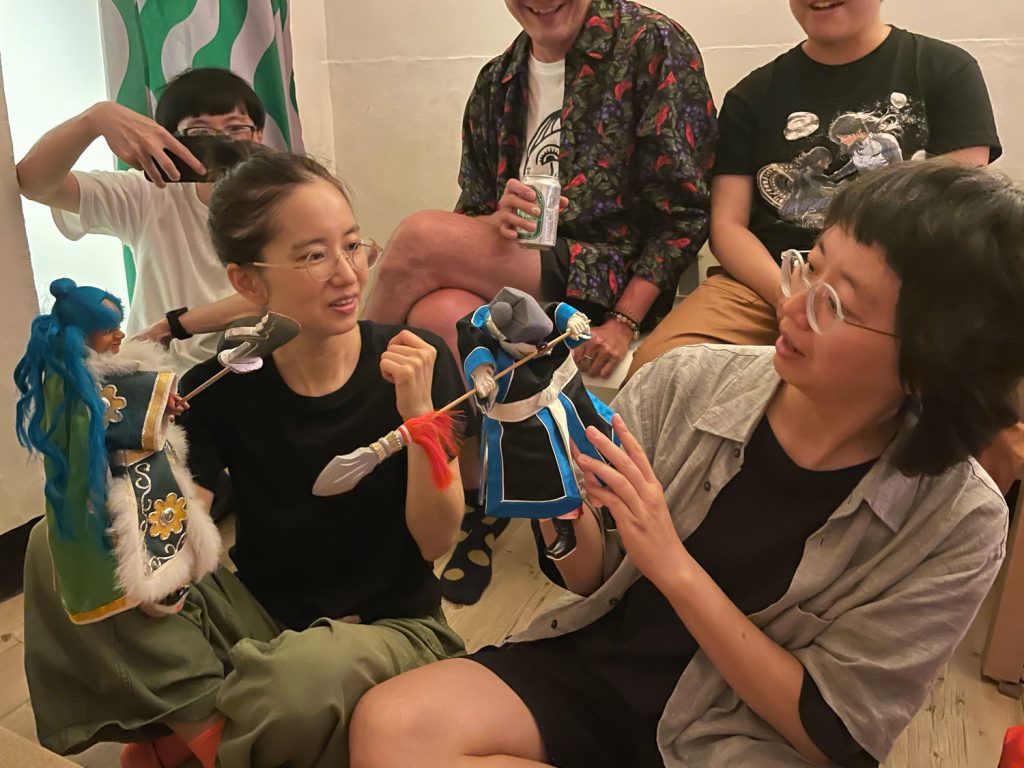
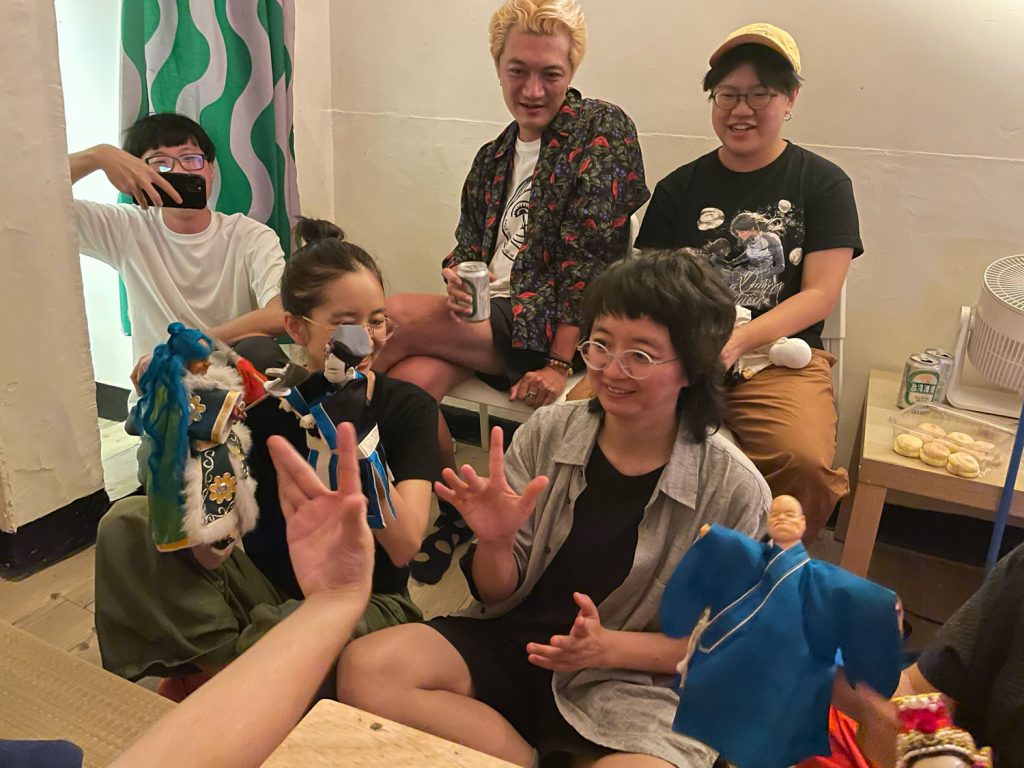
Thank you Li Yi-Hsien for engaging with these questions, Welcome Lim-Kong Society, especially Sheryl Cheung and Xia Lin, for hosting and interpreting, Chu Yi-Feng for sharing documentation, interpretation and explanation and everyone else who came to look, listen and question:)This research is supported by the Foundation for Scholarly Exchange – Fulbright Taiwan.
